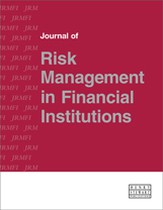A regulatory stress test to-do list: Transparency and accuracy
Abstract
Regulatory stress tests use forecasts of bank performance over hypothetical multi-year stress scenarios to set minimum regulatory capital requirements. Notwithstanding their popularity among US and European regulators, little is known about the accuracy of supervisory stress test models. Regulators keep the details of their stress test models confidential, inhibiting an independent verification of regulatory model performance. Using data from the 2008 financial crisis, this paper demonstrates how the lack of transparency and model inaccuracy have the potential to create costly misallocations of banking resources.
The full article is available to subscribers to the journal.
Author's Biography
Paul H. Kupiec is a resident scholar at the American Enterprise Institute. He has served as the director of the Center for Financial Research at the Federal Deposit Insurance Corporation and chairman of the Research Task Force of the Basel Committee on Banking Supervision. In addition, he has held senior positions at The International Monetary Fund, JP Morgan, FreddieMac and the Federal Reserve Board.
Citation
Kupiec, Paul H. (2018, March 1). A regulatory stress test to-do list: Transparency and accuracy. In the Journal of Risk Management in Financial Institutions, Volume 11, Issue 2. https://doi.org/10.69554/GUEU4467.Publications LLP
